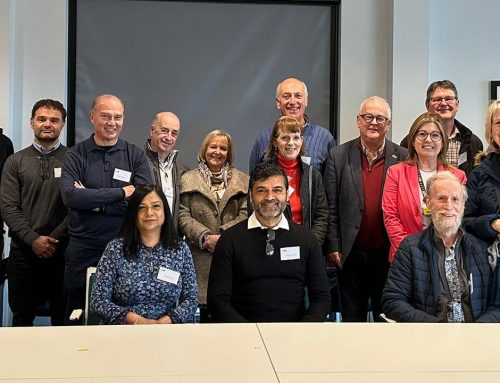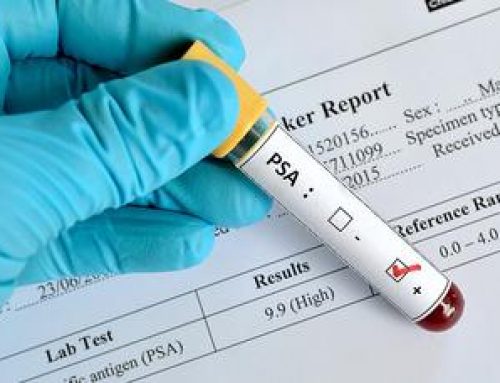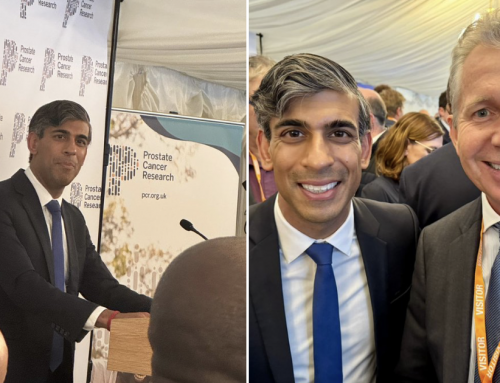
We are delighted to sponsor the MD fees for Dr William Hayhurst as he launches the LDR BURST trial at the Royal Surrey NHS Foundation NHS Trust.
The trial will compare the side effects of Low Dose Rate Brachytherapy against Ultra-hypofractionated Radiotherapy using Spacer Gel Treatment in men with Low to Intermediate Risk Prostate Cancer
The LDR BURST trial will compare the side effects of two radiotherapy treatment options used to cure men with localised prostate cancer. The first treatment option is low dose rate (LDR) brachytherapy. This method uses small radioactive seeds that are inserted into the prostate gland using ultrasound guidance, usually under general anaesthetic, to deliver their radiation to the nearby prostate cancer cells. Following the short procedure men will have a CT scan to check the seed positioning with the aim to discharge you home on the same day. The seeds will emit their radiation over several months before losing all their activity. Over 5000 men have been treated with LDR Brachytherapy at the Royal Surrey County Hospital.
Stereotactic radiotherapy (SBRT) is an alternative curative treatment option for men with localised prostate cancer. It is a form of external radiation (radiation delivered from outside the body). Stereotactic radiotherapy uses precise high energy x-rays to target the prostate gland. This treatment is delivered in 5 treatment sessions known as fractions, given as an outpatient. Each fraction is given on alternate days of the week (e.g Monday, Wednesday and Friday) with the full treatment course completed within 2 weeks.
SBRT has recently been approved by the NHS for prostate cancer following successful results in International trials (the PACE A and B trials) demonstrating it is safe and effective to give external radiotherapy in five treatment sessions. Prior to the PACE trials, external radiotherapy was typically given over 20 sessions in the NHS, with a smaller dose given in each treatment compared to SBRT. Delivering a higher dose in each treatment fraction is known as ‘ultra-hypofractionation’. The 20 fraction treatment will still be continued to be used in the NHS for men who are not eligible for SBRT.
Prior to starting external radiotherapy treatment, men will undergo a small procedure, typically under local anaesthetic, to have metallic markers inserted into the prostate known as ‘fiducials’. These markers help the Oncologist see the prostate gland better when planning and delivering the external radiotherapy, ensuring it is as accurate as possible.
The side effects of both the radiation treatments are similar. Common side effects include bladder issues, like needing to urinate more often and having a slower urine flow. Some patients might also experience more frequent and looser bowel movements, occasionally with a little blood. These symptoms usually get better as men recover, though some may linger. Additionally, some men might have trouble achieving or maintaining an erection after radiation treatment, but this can often be managed with medications. Both of the treatments use ionising radiation to destroy the prostate cancer cells. Ionising radiation may cause cancer many years or decades after the exposure. The chances of this happening to you are the same whether men take part in this trial or not.
As part of the trial, participants will be offered the opportunity to have a protective gel, called Barrigel, inserted into the space between the prostate gland and the rectum. Studies have shown that this significantly reduces the dose of radiation to the rectum as there is a bigger gap between the two organs. This gel can be inserted at the same time as the Brachytherapy seed insertion or the fiducial marker insertion and therefore does not require an extra appointment. The gel is slowly reabsorbed following the radiation treatment over the next 3 to 6 months following treatment.
Both of the radiation treatment options discussed above are routinely offered for men with your type of prostate cancer on the NHS
The trial sets out to randomly assign 110 men to one radiation treatment to compare their side effects. There is a 50% chance you will be assigned to LDR brachytherapy treatment group and 50% chance of SBRT treatment group.
Men will be asked to complete two questionnaires prior to starting treatment and at regular time points following your treatment. They will have a telephone call every 4 weeks for the first 2 months to check their side effects, followed by a face to face appointment 3 months following treatment with their Oncology consultant with a PSA blood test.



